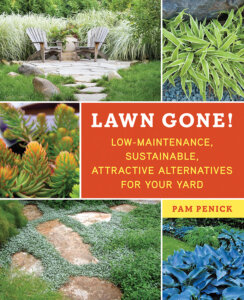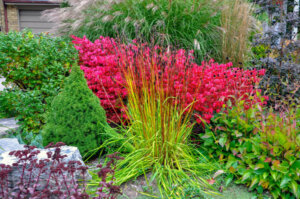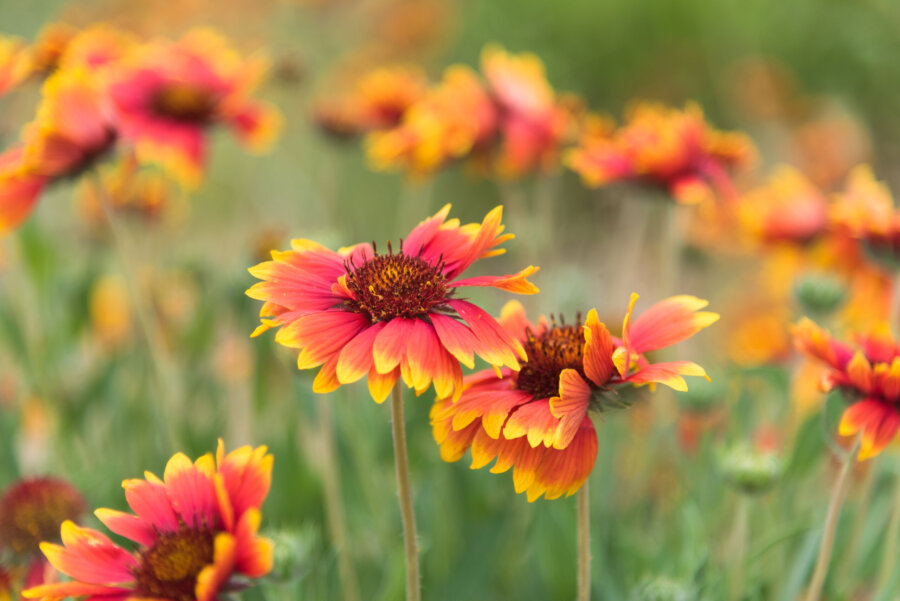Try to Imagine: Grass Lawns Gone!
It’s not exactly breaking news that America is obsessed with expansive grass lawns. Americans spend roughly $60 billion a year on what’s known as the turfgrass industry. Lawns account for some 40.5 million acres of grassland, larger than the entire State of Iowa. More surface area in the United States is devoted to yards than irrigated crops, such as corn or wheat.
The concept of “lawn” originated around the sixteenth century in England, where the aristocracy had the financial means to employ a veritable swarm of groundskeepers to maintain huge swaths of their estates. The lawns were vast and sprawling, ideally comprised of one grass species, subject to stringent weed and pest control, watered profusely to preserve its prized green color, and regularly mowed.
Flash-forward to the present: So, exactly how is lawn maintenance in the year 2022 any different from that done in the sixteenth century? You probably don’t have a personal swarm of groundskeepers to maintain your lawn meticulously; even “better,” you probably have to do all this never-ending, laborious work yourself. There goes the weekend!
However, the amiable ongoing competition regarding which of your neighbors boasts the best lawn on the block, in fact, has a devastating impact on the environment. Every year, all across America, homeowners lavishly pour 3 trillion gallons of water a year on their lawns, squandering 200 million gallons of gas—for all that mowing—and drench their lawns with 70 million pounds of pesticides.
However luxurious those pampered lawns may feel to bare feet, they unfortunately offer zero habitat for wildlife, pets, plants, and pollinators—honeybees, bumblebees, beetles, and butterflies—that contribute to a healthy and diverse ecosystem. Birds, as an example, may innocently eat berries and seeds that have absorbed pesticides from the ground, and rainwater runoff from all those lawns can carry pesticides and fertilizers into rivers, lakes, streams, and oceans via your local sewer system. And if all that wasn’t bad enough, you have to go through the whole rigmarole again, next year, and the next, and the next, seeding and watering and fertilizing and weeding and edging and leaf-blowing and lawn-mowing, to keep your pristine lawn up to snuff.

Fortunately, there’s a growing lawn-alternative movement afoot that, some folks say, will of necessity make the wastefulness of the manicured, manufactured lawn obsolete in the next ten to fifteen years. It’s dubbed the “No-Mow Movement,” and some like-minded homeowners are pledging to convert part or all of their lawns to at least a less-maintained plot of land.
Such steps include unmowed grass that is left to grow wild or at least unkempt; low-growing turf grass that needs little grooming, which often means a fescue blend; naturalized terrain, the grass being replaced with native plants or groundcover; and edible plants—vegetables and fruit-bearing trees—to replace the water-wasting lawn.

Just imagine: What if your neighborhood were defined, not by a consistency of homes, but by a diversity of no-mow designs, each exhibiting a practical, far less labor-intensive, eco-friendly variety of landscaping, much like an appealing patchwork quilt seen from above? Now imagine that your weekend-consuming, endlessly expensive lawn is lawn gone. Ahhh. Now that’s a summer to enjoy!
The No-Mow Movement is a conservation initiative intended to create a healthy and sustainable ecosystem. The holistic approach to landscaping reduces the need for chemicals, irrigation, and regular traditional lawn maintenance.
